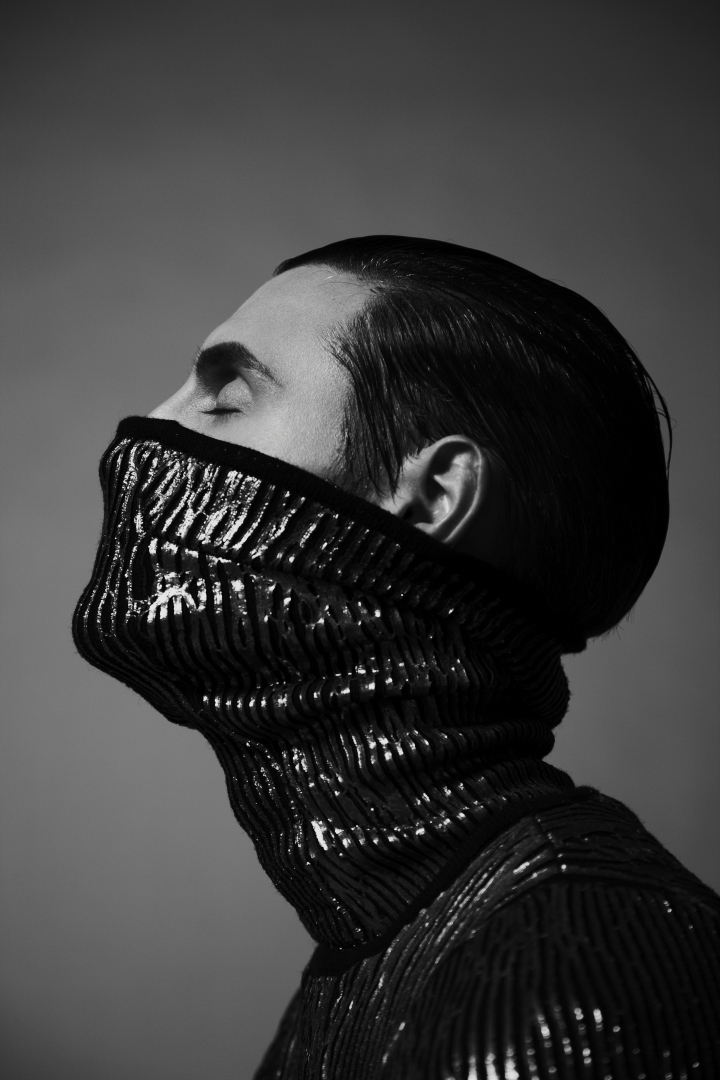Kim Choong Wilkins
How would you describe your designs?
I am trying to develop an aesthetic whereby form and structure have the same baring as texture. There is so much more to men’s knitwear than making a statement based on the depth of a neckline! I want my knits to be crackling with attitude
Your inspiration is “The Gutter” a concept that is open for interpretation. What does it mean to you?
In general terms I find my inspiration in “the gutter.” I don’t know whether I consciously look there to find it, or if it leaps up to find me. It has something to do with finding pleasure in ideas and objects that are discarded, unsavory and perverse
Tell us about your creative process, is it consistent, is it random?
It always starts with a visual connection, and I build from there. Its often quite instinctual, and from this position I start my analysis, about what is really engaging and captivating about the concepts, moods and aesthetics involved in my inspiration. There are times when a piece of writing or something I have heard has sparked my process, but even these have had a very physical and visible quality to them. I enjoy the interaction with things that are jarring and obtuse, universal things that we all find uncomfortable, because I think that in this way we discover a little more about the nature of what makes us human. There is nothing passive about my process, you have to get very involved if you want it to yield to you. Research into my subject is quite integral to my work, and often continues to inform my work long after I think it has been put aside. However, it is the next step that is the most important, the physical part. I need to manipulate my medium in reality and my approach is more sculptural and immediate than abstract
Your final menswear collection is called “BodyBound”. What is the story behind the name?
The inspiration for the collection was the macabre photography of Joel-Peter Witkin and a particular verse by Christina Rossetti: “We must not look at goblin men, We must not buy their fruits: Who knows upon what soil they fed Their hungry thirsty roots?” Together they inform my collection on the human condition, desire and the perverse. Referencing both the anatomical drawings of Vesalius and the eroticism of Hokusai, the collection revolves around skin, sinew, muscle, and bone. It pumps sex back into a craft that has become lust-less, prompting arousal and addiction for men’s knitwear by examining the relationship between seduction and repulsion.
You have done some amazing work experience. What was it like working for the late and Great Alexander McQueen?
I worked twice for McQueen, the first was a baptism in fire. I rather naively thought to go there to learn how to cut… It is extraordinary how fast fear makes you learn! The vocabulary in the studio was wonderfully colorful, that alone was rather enlightening. The most important thing I understood there was how nothing is ever down to one person alone. Everything made is the consolidation of a hundred efforts, a hundred sweaty bodies, a hundred sleepless nights. The atmosphere was electric, charged with anxiety and focus.I have since worked at many other companies including Jasper Conran, Ermenegildo Zegna, Katie Eary and Matthew Williamson.
What are your thoughts on the current state of Menswear in the fashion industry as it is?
I think that Menswear at the moment is pretty healthy and is experiencing the beginnings of a renaissances, I can’t wait for it to gain momentum. All in all, it is a time of increasing optimism, if you look at new designers like Matthew Miller, and Mason Jung, what they propose as men’s fashion is truly refreshing. It signifies the start of a visual and emotional maturity in menswear, independent from that of womenswear. However, there is still too much emphasis on reservation being equated with sophistication. There is nothing masculine about being reserved, if anything it is the singularly most emasculating thing I can think of. Menswear needs to be dazzling again, I think that is what we as menswear designers should strive for.
What do you think is your FAULT?
Not spending more time in museums.
